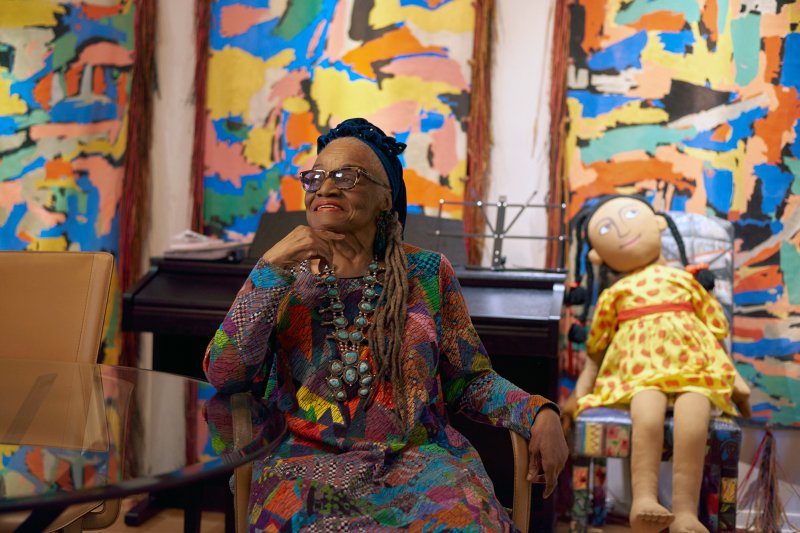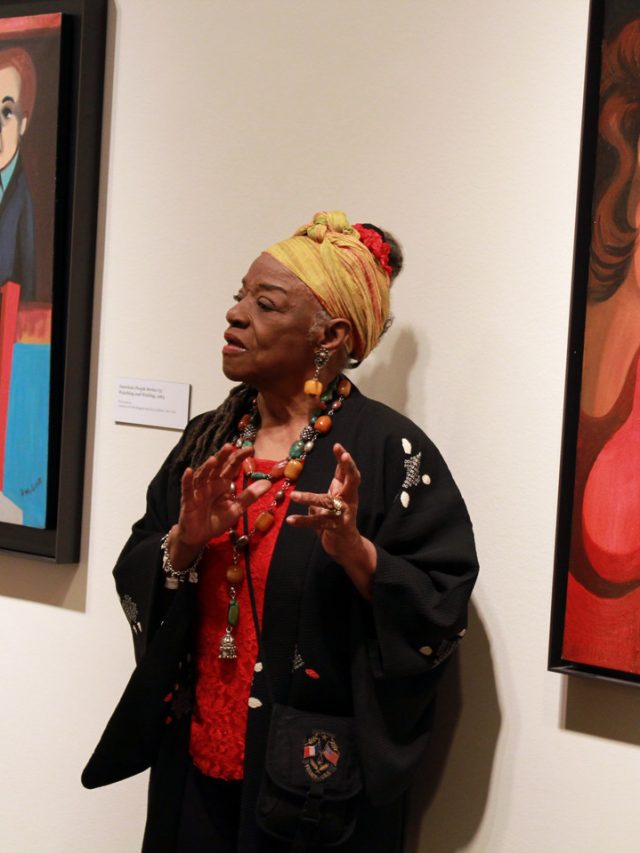Say it with us, “Black Rights ARE Human Rights”. “Women’s Rights ARE Human Rights”. An artist extraordinaire, Faith Ringgold has dedicated her life to realizing these slogans and ensuring mainstream acknowledgement of Black women artists. Born on October 8, 1930, she is a Jane of all trades. She dabbles in paintings, quilting, performance art, and sculpting, embedding subtle signs of herself in her creative work. Faith Ringgold art style amalgamates her childhood experiences and the occasional tales of racism & sexism.
Given below are 11 astonishing facts about Faith Ringgold
- Although her work is a testament to the routine struggles of an average working-class black woman, she was not, to her admission, “poor and oppressed”. She was guarded from “oppression and surrounded by a loving family.” Faith Ringgold grew up during the Harlem Renaissance which saw a boom in the celebration of African-American culture.
2. Faith Ringgold dubs her collection ‘American People’ as the start of her mature artistic venture. This series describes the coexistence of the diverse races in the United States. The mural-sized paintings narrate the prejudice and segregation which affected (and continues to do so) the 1960s US, leading to the civil uprisings. The motif of the American flag represents the false notion of a united front.
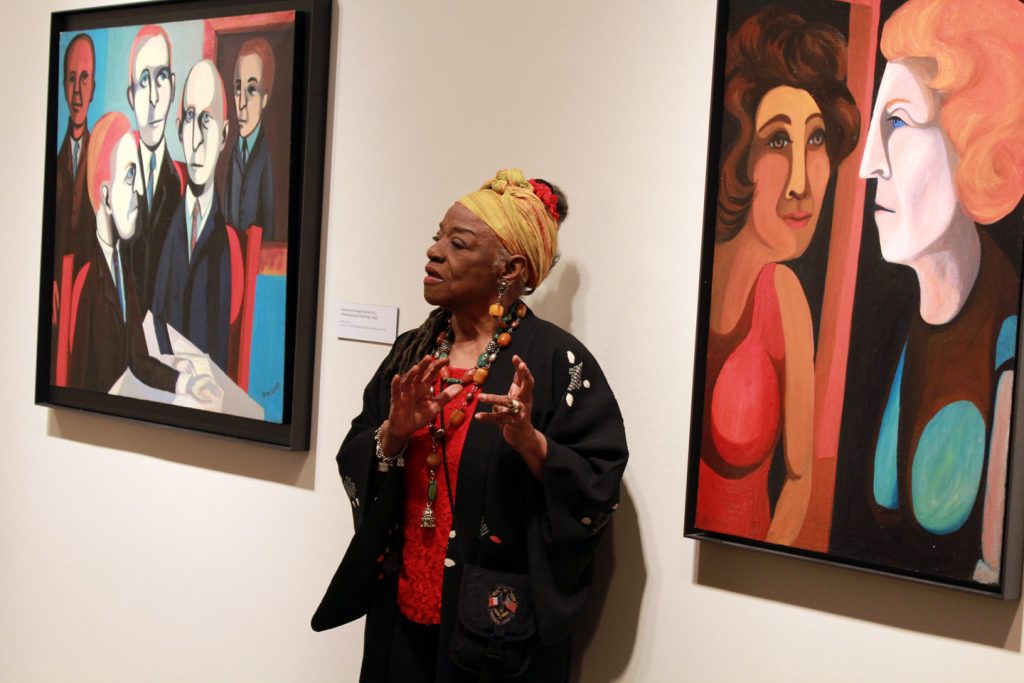
3. Faith Ringgold artwork, ‘For the Women’s House’ was installed in the Women’s House for Detention, Rikers Island. It was sponsored by the Creative Artists Public Service Program (CAPS). The canvas is segmented into 8 triangles, reminiscent of Congo’s Kuba textiles. She visualizes women in non-traditional occupations filling in as professionals and civil servants. This Faith Ringgold painting is a direct dismissal of incarceration. Instead, she demands a positive alternative to titillate and enhance their lives. The installation paved the way for the establishment of ‘Art Without Walls – Free Space’.
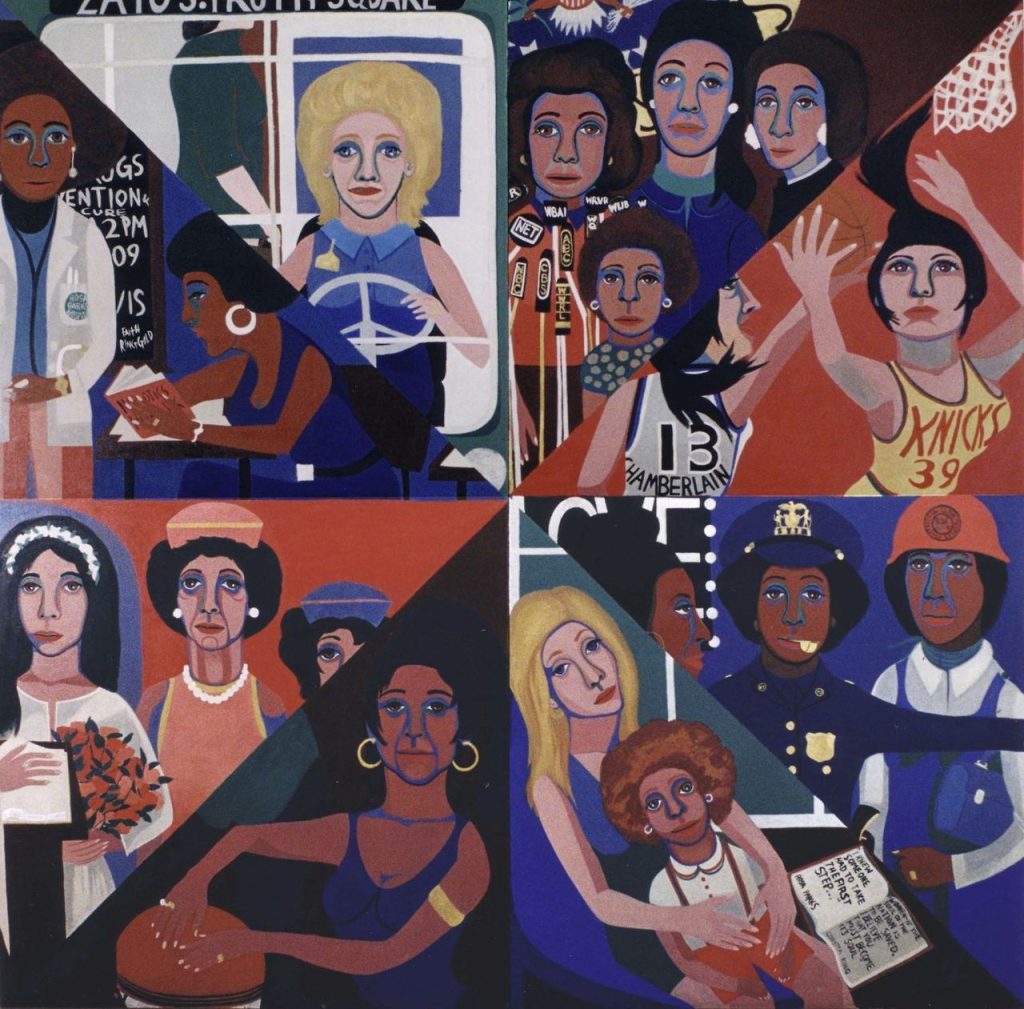
4. Coinciding with the land of Apollo 11 on the moon, Faith Ringgold debuted her new painting, ‘Black Light Series #10: Flag For the Moon: Die N****r’. At first, the painting seems like a distorted greyish perspective on the American flag. Further inspection from different angles reveals the careful placement of the words ‘Die’ and ‘N****r’, through the use of compressed lines. The artwork questions the government over their use of taxpayer money; allocating it for their space missions rather than feeding the poor black people on the streets.
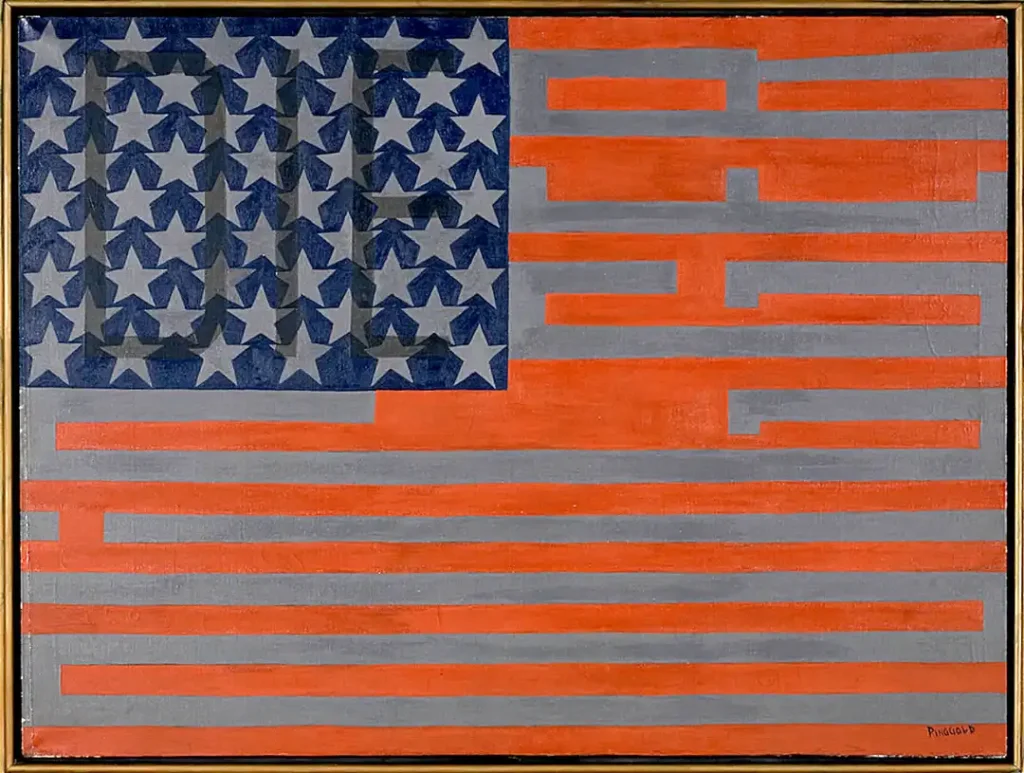
5. Critics note ‘The French Collection’ among Faith Ringgold’s most ambitious works to date. The 12 quilts feature acrylic & ink on canvas and patterned fabric. The quilts elucidate the fictional story of a black girl, Willia Marie Simone as she moves from Harlem to France aspiring to become a model and an artist. During her time she met with several significant figures – Van Gogh, Matisse, Harriet Tubman, Josephine Baker, Rosa Parks, Martin Luther King Jr., and more. Although the male and female artists are referenced sparingly throughout this collection, it references the male domination in the industry. It also mirrors her life as a black American woman with kids trying to find her ‘modern’ identity.
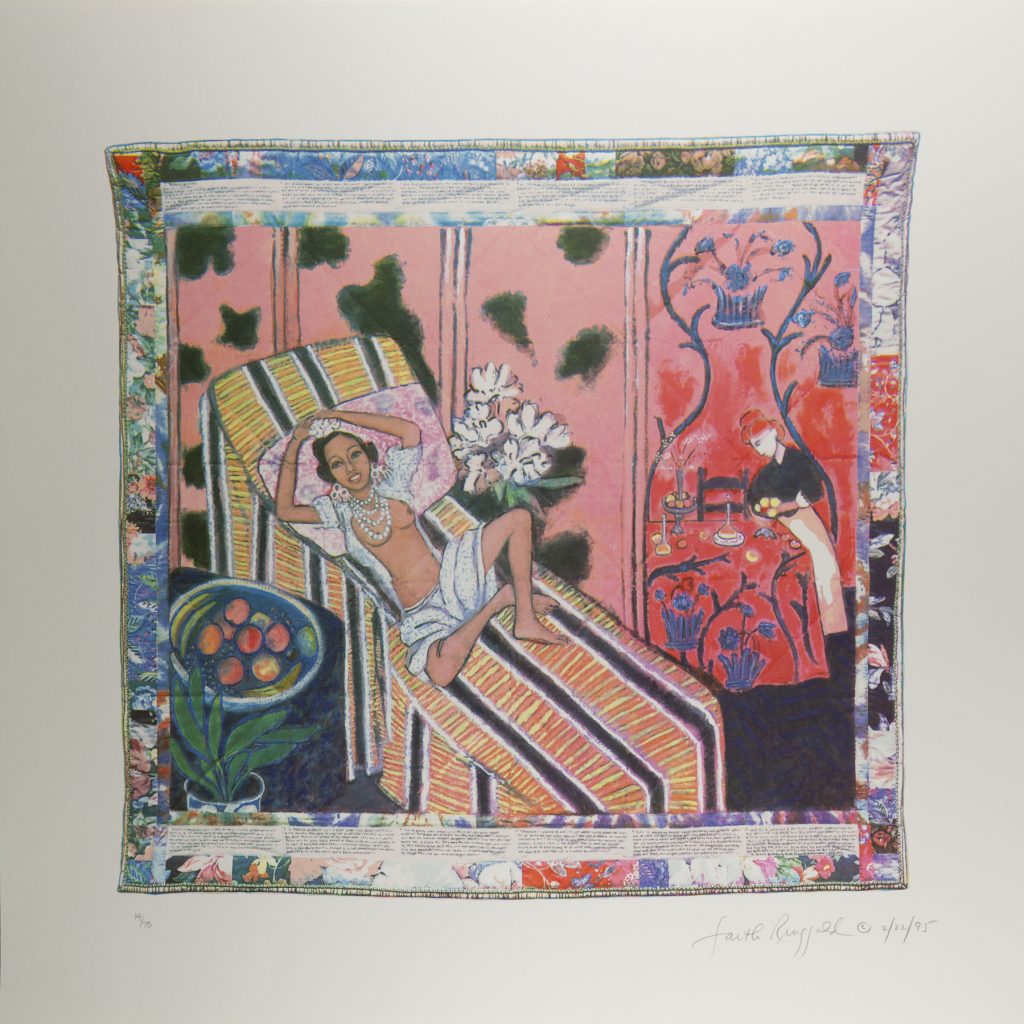
6. In 2022, Faith Ringgold New Museum retrospective was the talk of the town. The three floors of the New Museum of Contemporary Art, New York were filled with the brilliance of Ringgold. This retrospective unleashed black excellence onto the world through her imaginative figures, real struggles, and inventive storytelling. This night was devoted to the influence of black feminism and its incorporation into art.
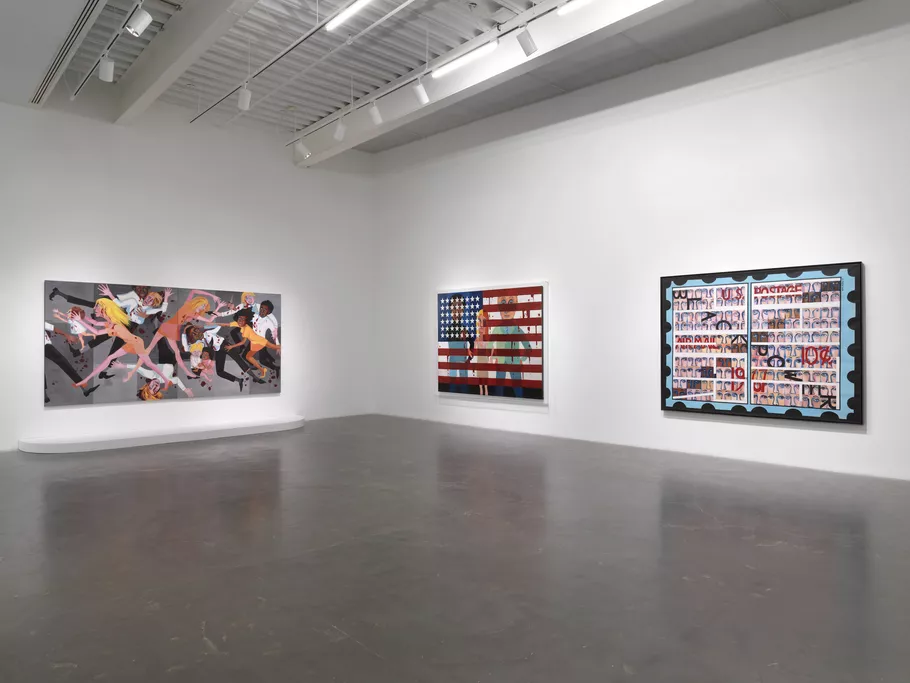
7. She engendered the ‘Slave Rape’ series. As shocking as the title may be, there is no evidence of rape in the three quilts. The quilting is reminiscent of the Tibetan ‘Thangka’ textiles. The series features the effigies of an exploited black woman. Despite the doubtful nature of the heinous act even happening, the stance of the woman is dominant. In one of the quilts, the woman brandishes a hatchet while caressing her swollen belly. It serves as a politically strong message of standing against oppression and fighting submission. Ringgold however did not produce this work alone and was taught the intricacies of sewing by Willi Posey Jones.
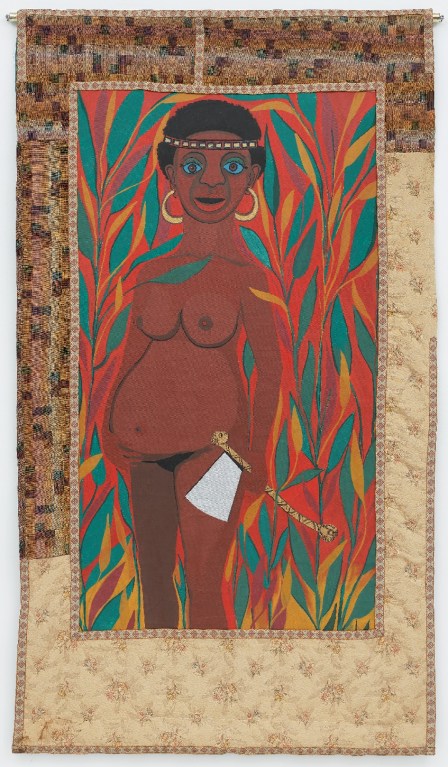
8. In 1983, she debuted another masterpiece titled, ‘Who’s Afraid of Aunt Jemima?’ The title is a black subversion of Edward Albee’s play, ‘Who’s Afraid of Virginia Woolf?’ This Faith Ringgold artwork is a 56-panel quilt depicting the life of the infamous mascot, ‘Aunt Jemima’. The prevailing stereotype boxed black women (read Aunt Jemima) as a woman who lacked a business mind. With her quilt, she demolished the ideology. She displayed Aunt Jemima as a business maverick and matriarch with a taste for wit and ideas.
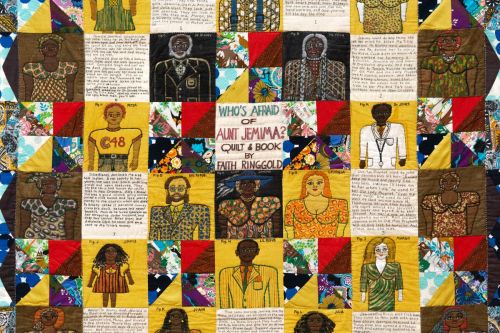
9. Faith Ringgold deep-dived into her African roots to present the ‘Witch Mask’ series composed of mixed media. She used cloth, beads, raffia, and kente cloth. In these masks, the nose pointed to the gaping mouths, as if urging the black woman to speak out and voice her opinions. These stylistic choices were a representation of the black women’s silenced tongues.
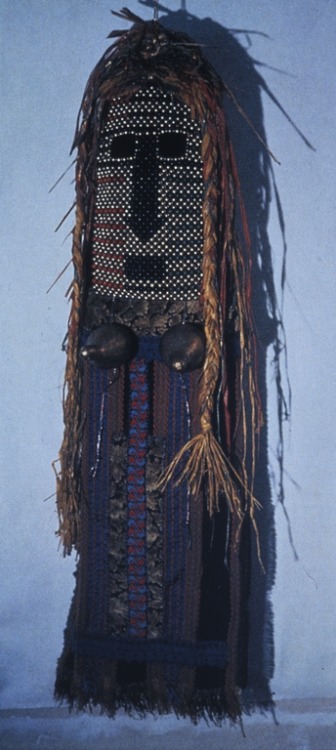
10. The masks she created were not meant to be displayed, but rather to be used during performances – and she did. Faith Ringgold wrote ‘The Wake and Resurrection of The Bicentennial Negro’, which was performed around the US between 1976 to 1981. The performance narrated the story of drug-addled Buba and his submissive wife Bena. Buba died of a drug overdose followed by a grieving Bena. Soon after their mourning they are resurrected and free of their vices. During the performance, Ringgold uses motifs of the American flag, Martin Luther King Jr.’s ‘I Have a Dream’ speech, ‘Amazing Grace’, and ‘He Arose’ to solidify the ties of seemingly ‘primordial’ characters to modern America.
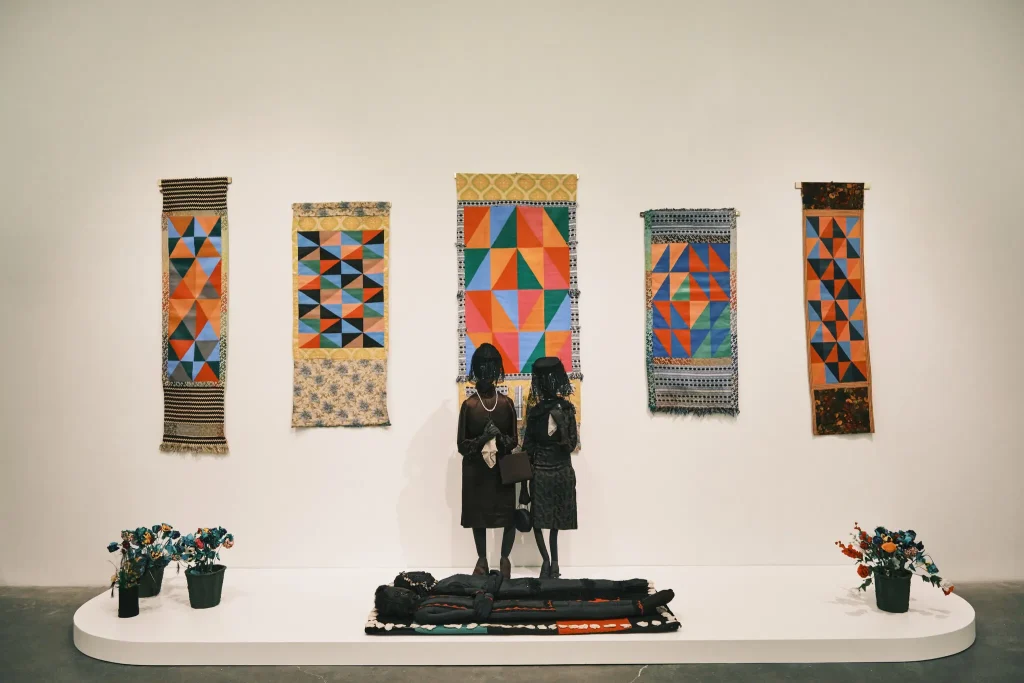
11. Faith Ringgold has written and illustrated the children’s book, ‘Tar Beach’, based on her eponymous quilt. The book is a straightforward depiction of black lives and the repercussions of the skin. It is an unusual mix of fantasy and reality laced with an uplifting political message. This book won her the Ezra Jack Keats New Writer Award and the Coretta Scott King Award for Illustration.
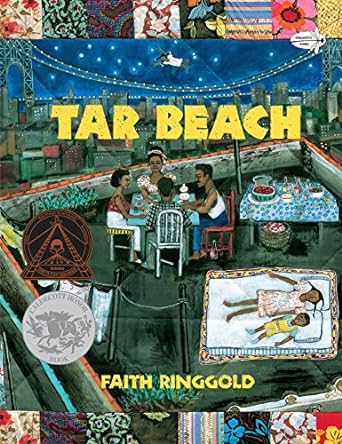
Faith Ringgold Art Style is a delectable mix of her lived experiences, shared by the diaspora of black women. Her work is a tapestry of complex symbols intertwined with casual racism and sexism. Through her style, she weaves a tale of oppression, a nod to her lifelong activism.
Photo Courtesy – The New York Times
Angelina Jolie to Rent Jean-Michel Basquiat’s Former Studio for New Fashion Venture

Hi Ya’ll !!
I love writing about pop culture and all things queer.
Sub Editor at Abir Pothi

